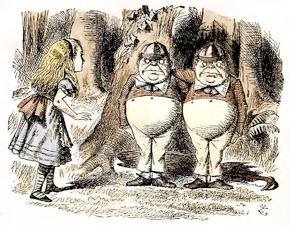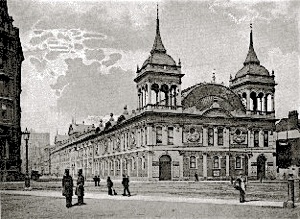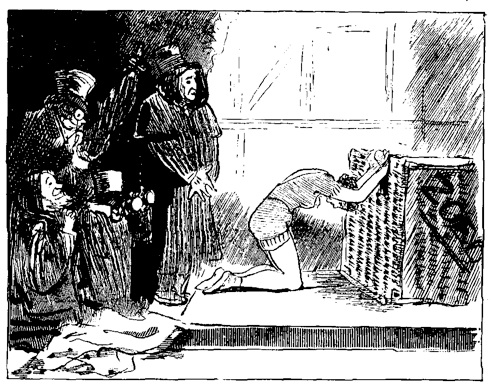Vale!
GONE! Is it possible? Thus do the years
Steal from us all we could wish to retain.
All that is pleasant in life disappears,
Only the sorrows and worries remain.
What though a church on the spot where it stood,
Methodist church, be erected instead?
What that the object's undoubtedly good?
Weep, for the Royal Aquarium's dead.
Many's the time I have pored o'er its sights,
Sights of which I at least could not tire;
Watched on a dozen consecutive nights
BLONDIN the Great as he strode on the wire.
Here was variety Time could not stale;
Oft and again have I eagerly run.
Now to set eyes on the Labrador Whale,
Now on the lady they shot from a gun.
Here I marked SLAVIN’S and SULLIVAN’S skill,
Notable experts in “counter” and “fib”,
Watched with a relish their world famous “mill”,
Cheered when the cæstus came home on a rib.
Here, too, I learned that to some kangaroos
Skill has been given to spar with the hoof.
Here of an evening I quake in my shoes,
Watching Miss LUKER dive down from the roof.
HOBSON his seal, Pongo's Simian face,
ZÆO (the bane of a shocked L.C.C.),
SANDOW the feminine bicycle race –
These were the sights that ecstaticised me.
Here saw I Roberts, the king of the cue,
Gazed on him daily, nor found it a bore,
Envied an eye so unerringly true.
Ah, that such visions shall charm me no more!
Still, when the logs are heaped cheerily high,
And in the chimney is howling the blast,
And when the beaker stands handily by,
I shall revisit the scenes of the past,
Muse o'er a pipe of the days that are dead,
Dream that once more I am able to scan
Closely the bird with the duplicate head,
Live once again with the Petrified Man.
First published in Punch, January 21, 1903.
Note:





